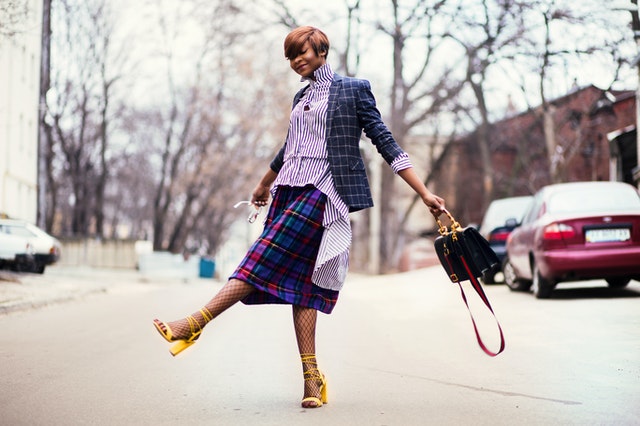Fashion Brands are Ready for the Metaverse

As the digital and physical worlds continue to merge, the internet’s new age — the “metaverse” — is reshaping the fashion industry.
Balenciaga is one of the luxury houses leading the charge. The company (known for its embrace of virtual clothing) recently announced plans to establish a business unit dedicated to exploring opportunities in the metaverse.
Balenciaga debuted its Fall 2021 collection via a gaming app, and the brand famously collaborated with the video game Fortnite to create a series of “skins” for the game’s characters. According to Business of Fashion, the majority of the fashion world’s investments in the metaverse have so far been through video game skins (cosmetics that customize characters). These developments offer a glimpse of what fashion might look like in the metaverse.
It’s called fashion, look it up. @balenciaga
Read more: https://t.co/Oy6YI3bKoB pic.twitter.com/LEOOSM3ifS
— Fortnite (@FortniteGame) September 20, 2021
According to Business of Fashion, digital environments are evolving from transactional consumer spaces to multidimensional worlds that encourage collaboration and creativity. Fashion, unsurprisingly, is expected to be a key player in the coming era.
The metaverse is a virtual reality that integrates the digital and physical worlds, redefining how we use technology. And it’s not some distant reality; we’ve already arrived.
The pandemic has compelled the entire world to participate in daily Zoom meetings and VR chats, and it has increased our collective urgency to cultivate our online identities. Facebook, which owns Instagram and other social platforms, is rebranding as “Meta,” with the goal of changing users’ online experiences through augmented reality and virtual avatars.
COVID-19 has been a catalyst for the metaverse and digital fashion in large part due to the blurring of physical and virtual lines.
With the popularity of digital influencers like Miquela Sousa, an artificial intelligence fashion and lifestyle blogger with over three million followers, social media platforms like Instagram have introduced us to the metaverse.
In this day and age, many people buy clothes solely for the purpose of posting styled photos on social media. Because we consider our online identities to be extensions of who we are, the clothes we post are already digital in some way. Pixel-made clothing caters to our desire for virtual self-expression while minimizing physical waste.
Because of its low environmental impact, digital fashion is appealing, particularly to younger consumers. Gen Z, in particular, is known to advocate for and invest in environmentally friendly clothing. With growing calls to reduce fashion’s environmental impact, digital fashion presents an obvious option for brands to limit waste while still profiting.
Fashion brands are capitalizing on this digital renaissance by introducing virtual clothing designed solely for our digital identities. Gucci released a digital sneaker designed specifically for online spaces in March. This year, brands such as Burberry and Louis Vuitton introduced NFTs, or “non-fungible tokens,” which are one-of-a-kind animated digital items. This technology also benefits retailers by recording product ownership on a shared blockchain and preventing counterfeiting.
#TheBSeries presents our NFT, Sharky B, and accessories collection. Styled with our #TBMonogram, the exclusive Burberry Blanko vinyl NFT toy will be available in limited quantities to collect in the game Blankos Block Party from today 11pm BST, 3pm PST https://t.co/RhCv8gGvgp pic.twitter.com/nAcyc8QyNw
— Burberry (@Burberry) August 11, 2021
On a creative level, digital fashion removes physical constraints. Unlike traditional luxury clothing, there are no size or tangible restrictions. This novelty enables users to dress more freely and wear materials that they would not be able to wear in the real world. While runway fashion is often a “conceptual, unattainable dream,” fashion critic Rachel Tashjian writes for GQ that the metaverse allows us to sell and wear “ridiculous” creations.
Because all that is required to create and sell digital pieces is access to a computer and the internet, the metaverse will also make it easier for smaller designers to break into the market. As a result, digital clothing is making the fashion industry more accessible to both sellers and buyers, while also addressing the urgent need for sustainability.
As the metaverse approaches and the lines between reality and virtual continue to blur, fashion is looking ahead.







